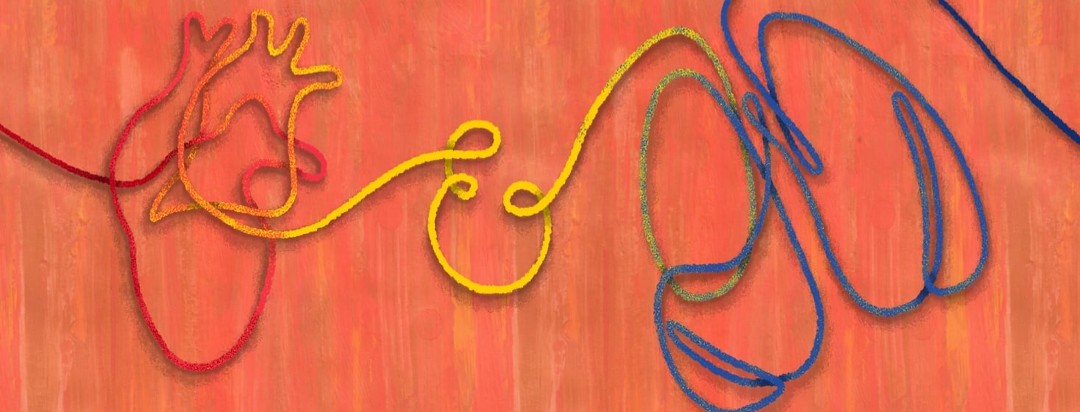Rheumatoid Arthritis and Pulmonary Arterial Hypertension
Rheumatoid arthritis (RA) is a systemic disease that affects more than joints within the body. It can affect connective tissue and internal organs, such as the heart, lungs, liver, or vascular system. RA is associated with an increased risk of cardiovascular and lung diseases.
A lesser-known disease that can be associated with RA is pulmonary hypertension (PH) which is a type of high blood pressure in the arteries in your lungs and the right side of the heart.
There are different forms of PH, including pulmonary arterial hypertension (PAH) which is a frequent complication of connective tissue diseases such as lupus, scleroderma, or mixed connective tissue disease (MTCD). PAH can be a complication of RA as well.
What is pulmonary arterial hypertension?
Pulmonary arterial hypertension (PAH) is a specific form of PH that is characterized by damaged, narrowed, blocked, or destroyed blood arteries in the lungs.1
This damage slows down the blood flow through the lungs and subsequently increases the blood pressure in the pulmonary (lung) arteries as the right side of your heart works harder to pump blood through your lungs. Eventually, this extra effort to pump blood to the lungs causes the heart muscle to weaken and results in heart failure.
Symptoms of PAH
Symptoms of PAH can overlap with those of asthma, chronic obstructive pulmonary disease (COPD), sleep apnea, or even rheumatoid arthritis.
Common symptoms include fatigue, shortness of breath, chest pain, cough, edema, light-headedness, or heart palpitations.2 Unfortunately, the non-specific nature of the symptoms can delay diagnosis.3
Is PAH different from pulmonary hypertension?
There are five different types of pulmonary hypertension that are defined into groups by the World Health Organization (WHO) based on their underlying causes.
Group 1 includes PAH which is characterized by stiff arteries that limit the amount of blood that can be pumped from the right side of the heart to the lungs to become oxygenated.
Group 2 includes PH caused by left heart disease that reduces the amount of blood that can be pumped through the heart causing a backup and increased blood pressure in the lungs. This is the most common form of PH.
Group 3 included PH caused by chronic lung disease. Group 4 includes PH caused by chronic blood clots in the lungs. Group 5 includes PH that occurs due to an unknown cause.1
Are patients with RA more likely to have PAH?
Based on two studies published prior to 2013, the prevalence of PAH in patients with rheumatoid arthritis may range from 21 percent to 27.5 percent.4 The diagnosis of PAH in these studies was based on echocardiography, whereas right heart catheterization is the “gold standard” for PAH diagnosis.
Although two studies are not enough to provide a definitive answer, it does point to the need for additional research on a possible association between RA and PAH. A more recent study suggests a 14 percent prevalence of PAH in patients with RA.5 As a comparison, research suggests that around 26.7 percent of patients with scleroderma or MTCD develop PAH.4
Pulmonary hypertension treatment
Common treatments for PH include medications that help to decrease blood pressure, assist the pumping of the heart, decrease excess fluid in the body (particularly putting pressure on the heart), blood thinners to reduce clotting, and supplemental oxygen to increase blood oxygen levels.
Treatment for patients with WHO Groups 2 and 3 PH primarily focuses on the treatment of underlying left heart or lung diseases. Treatment for patients with WHO Group 4 PH focuses on removing or targeting blood clots.
Treatment options for patients with Group 1 PAH have grown tremendously in recent years with several different mechanisms of action. However, each of these medications seems to focus on one goal: help blood vessels in the lungs relax (dilate), prevent blood vessels from narrowing, reduce the strain on the right side of the heart, and improve blood oxygenation.6
What is the survival rate of PAH in RA patients?
A study that compared RA-associated PAH (RA-PAH) with idiopathic pulmonary arterial hypertension (IPAH) demonstrated that patients with RA-PAH typically were older when they developed the condition and had a lower baseline mean pulmonary arterial pressure.
The RA-PAH patient group had a lower proportion of severe pulmonary disability (39 vs 52 percent) and could walk farther distance in the 6-minute walk test (440 vs 397 meters). One-year survival rates were comparable at 93 percent for RA-PAH and 94 percent for IPAH patients.7
Do you have both RA and PAH? Please share your story in the comments.
Be well,
Lisa
My other articles on RheumatoidArthritis.net.

Join the conversation